- Home
- Elizabeth Gaskell
Sylvia's Lovers Elizabeth Cleghorn Gaskell
Sylvia's Lovers Elizabeth Cleghorn Gaskell Read online
SYLVIA'S LOVERS
ELIZABETH CLEGHORN GASKELL was born in London in 1810, but she spent her formative years in Knutsford, Stratford-upon-Avon and the north of England. In 1832 she married the Reverend William Gaskell, who became well known as the minister of the Unitarian Chapel in Cross Street, Manchester. For the first sixteen years of her marriage, she combined the activities of motherhood, the management of a busy household and parish work in an area notorious for its poverty and appalling living conditions. She also travelled and started to write. Mary Barton, her first full-length fiction, published in 1848 and set in industrial Manchester, was an instant success. Two years later she began writing for Dickens's magazine, Household Words, to which she contributed fiction for the next thirteen years, her most notable work being another novel of Manchester industrial life, North and South (1855). In 1850 she met Charlotte Brontë, who became a close friend until the latter's death in 1855. Soon after this, Gaskell was chosen by Patrick Brontë to write The Life of Charlotte Brontë (1857), a carefully researched and sympathetic account of this great Victorian novelist. Gaskell's situation as a minister's wife and as a successful writer gave her a wide circle of friends, from both the professional world of Manchester and the larger literary world. She was a committed and uncompromising artist, as Dickens discovered when, as editor of Household Words, he unsuccessfully tried to impose his views on her. She proved that she was not to be bullied, even by a man of such genius as he. Her later works, Sylvia's Lovers (1863), Cousin Phillis (1864) and Wives and Daughters (1866), are usually considered to be her finest, revealing developments in narrative technique and subtleties of character portrayal. Gaskell died suddenly in November 1865 at Alton, Hampshire, in the house that she had bought with her literary earnings.
SHIRLEY FOSTER was born in north London and educated at the universities of London, Michigan, Yale and Liverpool. After teaching at Hull University, she went to the University of Sheffield, where she is currently Reader in English and American Literature. She has published widely in both these areas, most particularly on Victorian women's fiction and nineteenth-century Anglo-American travel writing. Her most recent publications are An Anthology of Women's Travel Writing, with Sara Mills (Manchester, 2002), and Elizabeth Gaskell: A Literary Life (Palgrave, 2002).
ELIZABETH GASKELL
Sylvia's Lovers
Edited with an Introduction and Notes by
SHIRLEY FOSTER
PENGUIN BOOKS
PENGUIN BOOKS
Published by the Penguin Group
Penguin Books Ltd, 80 Strand, London WC2R 0RL, England
Penguin Group (USA) Inc., 375 Hudson Street, New York, New York 10014, USA
Penguin Books Australia Ltd, 250 Camberwell Road, Camberwell, Victoria 3124, Australia
Penguin Books Canada Ltd, 10 Alcorn Avenue, Toronto, Ontario, Canada M4V 3B2
Penguin Books India (P) Ltd, 11 Community Centre, Panchsheel Park, New Delhi – 110 017, India
Penguin Books (NZ) Ltd, Cnr Rosedale and Airborne Roads, Albany, Auckland, New Zealand
Penguin Books (South Africa) (Pty) Ltd, 24 Sturdee Avenue, Rosebank 2196, South Africa
Penguin Books Ltd, Registered Offices: 80 Strand, London WC2R 0RL, England
www.penguin.com
First published 1863
Published in Penguin Classics 1996
Reprinted with new Chronology and revised Further Reading 2004
14
Introduction, Notes and Appendices
Copyright © Shirley Foster, 1996, 2004
Chronology copyright © Laura Kranzler, 2004
All rights reserved
The moral right of the editor has been asserted
Except in the United States of America, this book is sold subject to the condition that it shall not, by way of trade or otherwise, be lent, re-sold, hired out, or otherwise circulated without the publisher's prior consent in any form of binding or cover other than that in which it is published and without a similar condition including this condition being imposed on the subsequent purchaser
ISBN: 978-0-14-192198-3
CONTENTS
Acknowledgements
Introduction
Further Reading
A Note on the Text
SYLVIA'S LOVERS
Notes
Appendix 1: Sources
Appendix 2: Dialect and Textual Changes
Chronology
ACKNOWLEDGEMENTS
My production of this work owes a debt to a variety of people. Foremost is Andrew Sanders, not only because his excellent World's Classics edition provided an invaluable basis on which to build, but also because he most generously lent me his own (rare) copy of the fourth edition of Sylvia's Lovers, the text for this edition of the novel. I am very grateful to the librarian of the Whitby Literary and Philosophical Society, Harold Brown, who devoted much time to searching for information for me, and also to the librarians of the Special Collections of the Brotherton Library, University of Leeds, the Portico Library, Manchester, and the John Rylands Library, University of Manchester, all of whom gave me considerable help. I should like to thank, too, Tony Bennett of the Music Department, University of Sheffield, and John Widdowson of the Centre for English Cultural Tradition and Language at the University of Sheffield, who knows almost all there is to know about Yorkshire dialects and customs. Alan Shelston, Jane Mills and John Chapple encouraged and assisted me in many ways. And I received constant help, advice and materials, as well as much personal kindness, from Geoffrey Sharps, the repository of information for all Gaskell enthusiasts.
INTRODUCTION
I
When Elizabeth Gaskell visited Whitby with her two daughters, Meta and Julia, in early November 1859, she probably had no intention of basing a novel on the place; indeed, there is no evidence to validate Henry James's claim that she had gone there ‘for impressions preparatory to “Sylvia's Lovers” .1 The trip was made primarily for Julia's health (she is described as having ‘outgrown her strength‘);2 and in fact although they were there for nearly two weeks conditions were not propitious for extensive expeditions and observation, as Gaskell explains later in a letter to James Dixon, who had pointed out topographical inaccuracies in her text:
I was only there once for a fortnight… in such cloudy November weather that I might very easily be ignorant of the points of the compass if I did not look at the map.3
Nevertheless the place seems to have made a considerable impact on her; not only did she go out walking every day, but she also engaged in conversation with a wide range of Whitby inhabitants, learning from them facts of local history and customs which she would subsequently incorporate into her fiction.
The idea of writing a story about Yorkshire appears to have been in Gaskell's mind for some time, however. In the Preface to the first edition of Mary Barton (1848), she refers to a tale, ‘the period of which was more than a century ago, and the place on the borders of Yorkshire’,4 which she had already begun earlier. More immediately, she had been engaged with researches for her Life of Charlotte Brontë (1857), and although for this her explorations had been in the West rather than the North Riding, the crucial influence of the environment on isolated and close-knit communities must have struck her in both regions. This, compounded with her own experience of the north-east coast during her residence in Newcastle from 1829 to 1831 plus her family's marine background (several of her male relatives had been in the Royal Navy), may have encouraged her to take up her former idea and develop it into a full-length novel. In terms of plot, too, Sylvia's Lovers reworks certain themes prominent in Gaskell's previous work, most notably that of temporary disappe
arance or loss. The mysterious way in which people can vanish and then later reappear is treated in her story ‘Disappearances’, written for Household Words (June 1851); and, more pertinent to this novel, ‘A Manchester Marriage’ (Household Words, December 1858) deals with a woman unknowingly married to two husbands simultaneously but spared the distress of enlightenment by the decision of the returned first husband not to reveal his identity.
Whatever ideas were fermenting in her mind already, then, were clearly brought into focus by the Whitby experience. It is quite clear that Monkshaven in Sylvia's Lovers is the coastal town of Gaskell's brief but intense acquaintance, although what she saw in 1859 was in several respects different from the period of her story, nearly sixty years earlier. The row of houses in one of which she lodged, a Mrs Rose's at 1 Abbey Terrace, had only just been completed as part of a development on the town's West Cliff, purchased by George Hudson in 1848. The existing swivel-bridge over the Esk, linking the two halves of the town, had in 1835 replaced the old drawbridge erected in 1766. Whitby itself had become far more in touch with the outside world: the horse-drawn railway between Whitby and Pickering was opened in May 1836, and was soon superseded by a steam line in 1845, part of George Hudson's Railway Company; stage and mail coaches started running in 1795 and by mid-century there was an extensive network between Whitby and Leeds, York, Sunderland, Shields, and Stockton. Although Whitby's population had remained fairly static (according to F.K. Robinson, around 1790 it was between ten and eleven thousand, and this figure had barely altered in 1860),5 the chief source of its livelihood – and liveliness – was no longer the whaling industry, which had ceased at least thirty years before, but the growing number of visitors for whom it was an increasingly popular resort.
In other ways, however, there had been little change since the beginning of the century. The parish church, in its prominent position overlooking the estuary, the open sea and the ruined abbey, on a headland 199 steps up from the town, was basically as it was in the 1790s: apart from a new porch, now the principal entrance, added in 1823, an extension to the north transept in 1818, and the removal of the 1778 pulpit to a side-aisle in 1847, what little ‘modernization' that had occurred had been carried out in the mid eighteenth century. As Robinson explains, the church largely escaped the zeal of contemporary ecclesiologists for restoration:
It will be seen, that the repairs and extension of the structure have taken place when old church arrangements had not the position in the public mind which they now occupy.6
The interior which Gaskell describes in Chapter VI (she calls the church St Nicholas, not its real name, St Mary), with its florid wall memorials and lack of ‘wood-work' as she denotes it7 (the medieval rood screen across the chancel arch had been removed) is thus in the main that in which the real-life model for Darley, the whaleman killed in the press-gang riots, received funeral rites in 1793.
Many streets were unchanged, too. Sylvia and Molly Corney come to sell their butter and eggs in the market-place, although it was not exactly where Gaskell describes it, but slightly higher up High Street. The Butter Cross mentioned in the text did not exist as a market site – perhaps Gaskell had in mind the old mutilated cross on the Abbey Plain – but in 1793 there was a Town Hall or Tolbooth here (built in 1788 and still in good repair today), between whose pillars prospective sellers set out their wares. The shop and bank run by two Quaker brothers, Jonathan and Joseph Sanders, the originals of the Foster brothers in the story, was still to be seen – as it is now. Likewise, although the actual ‘Randyvowse' inn in Haggersgate which was attacked in the 1793 riots was not standing by 1859, there were plenty of similar buildings in the old town which could serve as models. The surrounding countryside would of course have been even less changed, and the two farms, Haytersbank (Robsons) and Moss Brow (Corneys), which are the focal points for much of the novel, are clearly based on existing structures. Mrs Chadwick states that ‘the old farms are still there‘,8 affirming that both have their originals in agricultural homesteads on the West Cliff – Straggleton Farm and High Straggleton – a claim that has been supported by later investigators. A. W. Ward, however, in his introduction to the Knutsford edition, argues that ‘the site of Haytersbank farm was on the way to Robin Hood's Bay to the south-east of Whitby‘,9 topographically a less convincing suggestion. Both claims remain disputable in any case, since Gaskell herself stated that she had no specific originals in view when she described the two farms. As she explains in a letter of November 1863 to James Dixon:
I did not intend Haytersbank for any particular place, or if I had some faint recollection of a farm house like it, it must have been a place near Sunderland where I once stayed for a couple of nights.10
Whatever its source, the composite recollection contributes to the realism of the narrative setting.
The verisimilitude of Gaskell's portrayal of the locale is attested to by the history of the illustrated (fourth) edition of the novel. When, in late 1863, George du Maurier was asked to undertake the illustrations for a new edition, he drew on sketches of Whitby made by Henry Keene, the brother of Charles Keene the actor, because these seemed to capture so well the town as it was described in the fictional text. Only later did he discover that Monkshaven and Whitby were one and the same.
Once inspired, Gaskell started to research in order to guarantee the historical and regional accuracy of her text.11 The progress of the novel itself, however, was erratic. Two days before Christmas 1859, she wrote to her publisher, George Smith, to say that she had three pieces of writing currently under way, the third of which was ‘The Specksioneer in 3 vols' (this was her first title for the work), ‘not far on, but very clear in my head, and what I want to write more than anything’;12 four days later she told him that she would try to send the whole three-volume novel to him in ‘September next’.13 References in March 1860 to investigations being made on her behalf by her husband, William – who consulted the Annual Register for details of press-gang activities in the north-east – and by people in Yorkshire suggest that she had begun work. In late March, she apparently read to her London friends, Emily and William Shaen, ‘a good deal of her new story’,14 and a few days later she told Charles Eliot Norton that with most of the family soon to be away, in ‘the comparative quiet of the house I mean to write very hard at my story; which ought to be done by Septr but… won't I fear’.15 But like all Victorian writing women, she was still dogged by the multifarious demands of domestic life. Though by early May she had written 117 pages of 570, in June Marianne, another daughter, became ill with suspected smallpox, and after Gaskell had nursed her and organized a subsequent holiday in Heidelberg for herself and three daughters, most of the summer had gone.
Similar delays and interruptions continued for the next two and a half years. Two volumes were finally completed by early December 1861 and sent to Smith; in mid March 1862 she was well on into the third volume and was discussing the title with him. And yet in late August she was apologizing to W. S. Williams, the publisher's reader, that she dare not promise the completed manuscript ‘before the end of January’,16 although she had already corrected and returned the proofs of the first two volumes. She sent a rather more defensive and irritable apology to the publishers, Smith, Elder and Co., in early September:
I should like to remind you that I never named any positive time for the completion of the book, and only yielded to Mr Smith's request that the printing might be commenced because I believed it to be convenient to him, and also because he stated that this beginning to print need not hurry me.17
Finally, Gaskell, now keen to get on with another unfinished piece (probably ‘A Dark Night's Work’), managed to draw the book to a close in Eastbourne in September 1862, and it was eventually published in February 1863, over three years after its inception.
This prolongation suggests not only the unavoidable constraints upon Gaskell's time and energy, to which she so often refers in her letters, but also the seriousness with which she thought ab
out her writing. The debates about the novel's title – earlier possibilities included ‘The Specksioneer' (too difficult to pronounce); ‘Philip's Idol' (too open to wilful misreading); ‘Monkshaven' (‘very stupid‘) – show this. The irregularity of composition inevitably had some effects on the text itself. There are, as J. G. Sharps18 and others have pointed out, many internal inconsistencies, especially in dates and names; the actual manuscript reveals the lack of continuity of the writing – words are crossed out, changed or left blank, and in one place Gaskell actually asks the editor to remind her of the names she has decided on for the owners of the shop.19 And yet these are merely the mechanics of the novel, minor mistakes which in no way detract from it as a whole. Except perhaps for the somewhat telescoped ending, which some critics regard as an indication of inartistic haste, Sylvia's Lovers shows a remarkable degree of unity, its various strands skilfully interwoven within an overall framework. In its thematic linking of the personal and the public and its carefully contextualized psychological complexity, it gives the impression of a highly mature and considered work.
II
Sylvia's Lovers belongs to a fictional genre popular in the early and mid nineteenth century – the historical novel, or novel in which conscious retrospect forms the narrative framework. Examples of this genre contemporary with Gaskell's work include Thackeray's The Virginians (1857–9), Dickens's A Tale of Two Cities (1859), and George Eliot's Adam Bede (1859), the last of which Gaskell was actually reading on the Whitby holiday and about which she wrote in admiration to its author. Like all such fiction, her novel operates within a ‘then' and ‘now' parameter, and Gaskell constantly draws attention to this dichotomy. In describing the Foster brothers' shop, for instance, she remarks about the projecting lower windows, ‘These openings had long been filled with panes of glass that at the present day would be accounted very small, but which seventy years ago were much admired for their size' (pp. 25–6). More ironically, in observing how the Monkshaven parishioners accept the inadequacies of their vicar, she remarks:

 Lizzie Leigh
Lizzie Leigh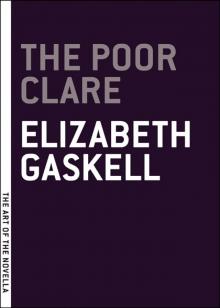 The Poor Clare
The Poor Clare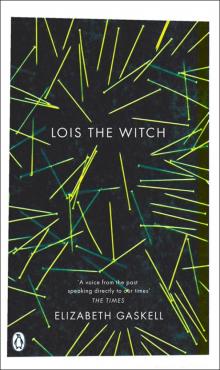 Lois the Witch
Lois the Witch North and South
North and South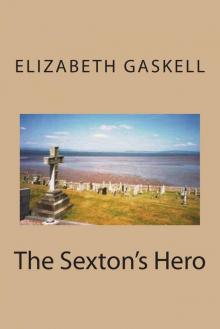 Sexton's Hero
Sexton's Hero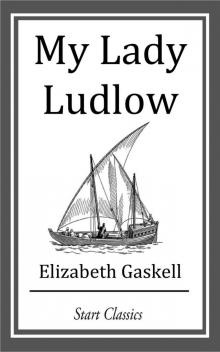 My Lady Ludlow
My Lady Ludlow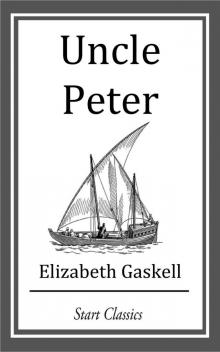 Uncle Peter
Uncle Peter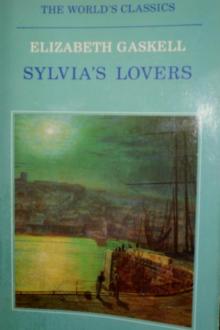 Sylvia's Lovers Elizabeth Cleghorn Gaskell
Sylvia's Lovers Elizabeth Cleghorn Gaskell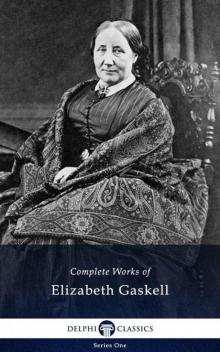 Delphi Complete Works of Elizabeth Gaskell
Delphi Complete Works of Elizabeth Gaskell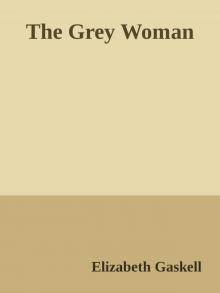 The Grey Woman
The Grey Woman The Old Nurse's Story and Other Tales
The Old Nurse's Story and Other Tales Cranford
Cranford Gothic Tales
Gothic Tales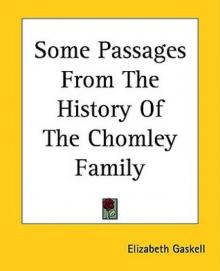 Some Passages From the History of the Chomley Family
Some Passages From the History of the Chomley Family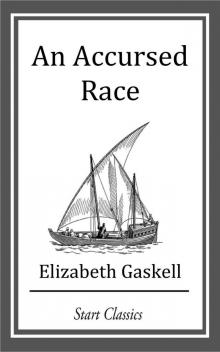 An Accursed Race
An Accursed Race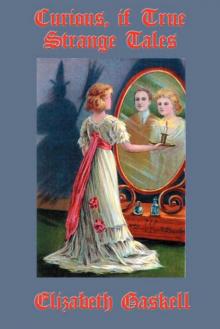 Curious, if True: Strange Tales Elizabeth Cleghorn Gaskell
Curious, if True: Strange Tales Elizabeth Cleghorn Gaskell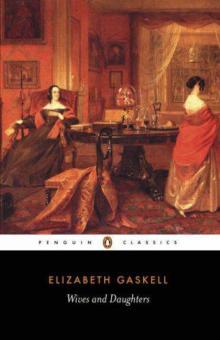 Wives and Daughters
Wives and Daughters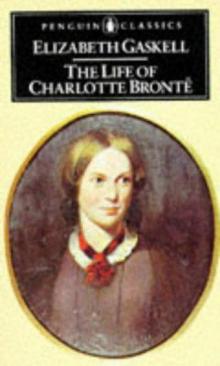 The life of Charlotte Brontë
The life of Charlotte Brontë